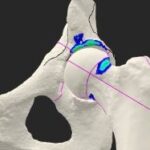By:Dr. Werner Andrade is the Medical Director of the Bariatric Program at Hialeah Hospital
Weight loss surgery is a personal decision that only you — with the help of your family and your doctors — can make. Chances are if you’re considering weight loss surgery, you’ve tried every diet and exercise routine you know. Over time, the results of weight loss surgery are often life changing, but there are many considerations with any surgery. Like anything, bariatric surgeries have evolved and there are several types and techniques to fit your health needs, aesthetic hopes and lifestyle.

How Does Bariatric Surgery Work?
No matter the technique used in your bariatric surgery, it’s designed to help you lose weight in two main ways: restriction and malabsorption.
With restriction, surgery is used to physically limit the amount of food the stomach is able to hold, thereby cutting the number of calories you consume. With malabsorption, surgery is used to shorten or bypass part of the small intestine, which reduces the amount of calories and nutrients the body absorbs.
Types of Weight Loss Surgery
–Roux-en-Y Gastric Bypass restricts food intake and decreases the absorption of food.
–Adjustable Gastric Band involves a small, bracelet-like band placed around the top of the stomach to decrease food intake. Gastric banding restricts the amount of food that your stomach can hold, so you feel full sooner, but it doesn’t reduce the absorption of calories and nutrients.
–Gastric Sleeve is a procedure where a surgeon creates a small, sleeve-shaped stomach about the size of a banana. This may be the first step in a two-part treatment when a gastric bypass is to be performed later. In a sleeve gastrectomy, part of the stomach is separated and removed from the body. The remaining section of the stomach is formed into a tubelike structure. This smaller stomach cannot hold as much food. It also produces less of the appetite-regulating hormone ghrelin, which may lessen your desire to eat. However, sleeve gastrectomy does not affect the absorption of calories and nutrients in the intestines.
–Biliopancreatic diversion with duodenal switch. As with sleeve gastrectomy, this procedure begins with the surgeon removing a large part of the stomach. The valve that releases food to the small intestine is left, along with the first part of the small intestine, called the duodenum. The surgeon then closes off the middle section of the intestine and attaches the last part directly to the duodenum. This is the duodenal switch. As a result of these changes, food bypasses most of the small intestine, limiting the absorption of calories and nutrients. This, together with the smaller size of the stomach, leads to weight loss.
Non-Surgical Weight Loss Programs
Only you know when the time is right for you to consider weight loss surgery. Before you take the plunge, there are effective non-invasive and proven weight loss programs. Check with your doctor to see what is available to you. One common option is doctor supervised meal replacement programs designed specifically for patients who struggle to keep weight off, but who don’t qualify for bariatric surgery. Remember: if you’ve made the decision to lose the weight once and for all, you’ve already taken the most important step in your weight loss journey. Next step would be to attend our FREE information questions and answer session with the specialist to learn more about our surgical weight loss options AT Hialeah Hospital. To register via phone call 1-888-417-1613 or register online at Hialeahhosp.com; Information sessions are offered in English and Spanish. Join us today, and move forward in improving your health.


























